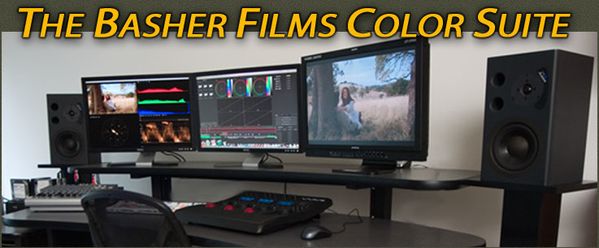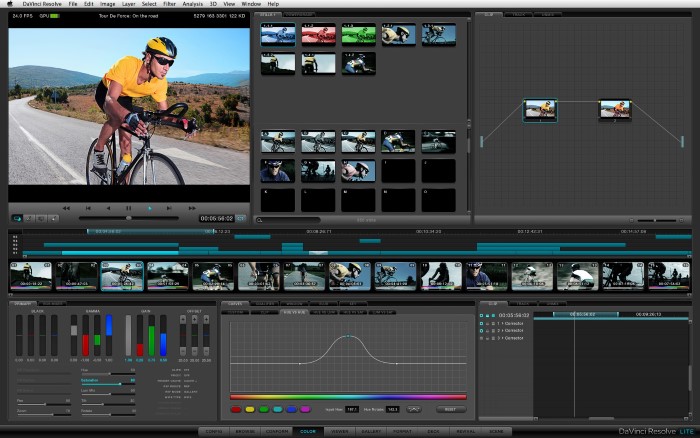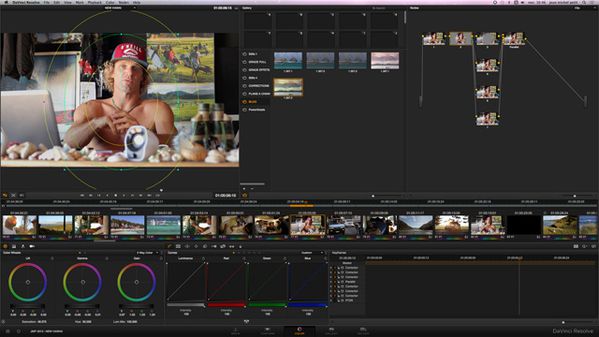

Davinci resolve lite 9 tutorial update#
The new firmware update (version 1.2) adds a couple of new features: Timelapse recording with settings from one frame per second to one frame every 10 minutes, the ability to use SSD drives formatted in the ExFat format, an aperture indicator in the UI when using compatible lenses and the camera will now be recognised as a compatible device when connected to Thunderbolt equipped Windows PCs. The camera features a 2.5K sensor, roughly equivalent to a frame of Super 16mm film, and can be fitted with Canon EF lenses (there will be a Micro Four Thirds version later in the year) In the next tutorial, we’ll add media to the Resolve project, make our selections and create a timeline with our selected portions of our various clips.Blackmagic have just released a firmware update for the Cinema Camera which together with the latest version of Resolve bring a few changes to the workflowĪfter various production problems we are now starting to see shipments of the Blackmagic Cinema Camera, a groundbreaking camera at an amazing price. Or, simply click on any part of the grey horizontal line about the icons to jump the playhead to that point.Īs well as the controls above, nearly all panels in Resolve have additional options somewhat hidden inside a little menu found by clicking on the 3 dots to the top right of each panel. There is also a little bright vertical line above these controls which is a playhead which can be clicked and dragged as needed.

Set In and Out points – although this will only work on media actually added to the project.Click and drag this icon for quick scrubbing backwards and forwards.Drop down to select to view either the video or the audio waveform.

Here is an explanation of the various buttons at the bottom of the viewer. If you click on a clip so that it has the orange border around it, this will put it in the viewer so you can look at it more closely. Selections of which parts of the media you wish to use can be done once added. At this point the viewer is for previewing the media so that you can select what to add to you project. While it may appear that you could make selections of certain parts of your media at this point, you haven’t actually added that media to your project as of yet, so no selection of In and Out points will stick. Moving your mouse over any clip WITHOUT selecting it will give an immediate live preview of the media in the preview window to the right. The tools highlighted at the top of the panel allow me to zoom into the media for a better view, sort the media, view as icons (this is the presently selected view as seen by the white icon) or view in a list view. Here you can see I have browsed to some assets from Artbeats which I may wish to preview and use in my project. You can also navigate to your media files in the normal way. To remove any folder, right-click and choose ‘Remove Folder from Favorites’. This is a quick selection area where you can add anything to it, find the folder you want and simply click and drag it to the ‘Favorites’ section. In addition, the little button at the top right (also showing white) indicates that the side panel populates all your attached drives, which can be open and closed to maximise the view of whatever folder you may be browsing.Īlso notice that with this side panel open, there is a ‘Favorites’ Section. For example, if a name is white as in the ‘Media Storage’ name at the top of this panel, it means that you can click on that name to open and close it, freeing you up to close any panels you don’t need and stay focused on the task at hand.
Davinci resolve lite 9 tutorial free#
One of the great things about this latest version of DaVinci Resolve is just how easy it is to open and close panels to free up screen real-estate. This week, we take the next step by finding and previewing media files. Last week, we explored importing media into DaVinci Resolve 14.

The Media Storage Panel in DaVinci Resolve


 0 kommentar(er)
0 kommentar(er)
